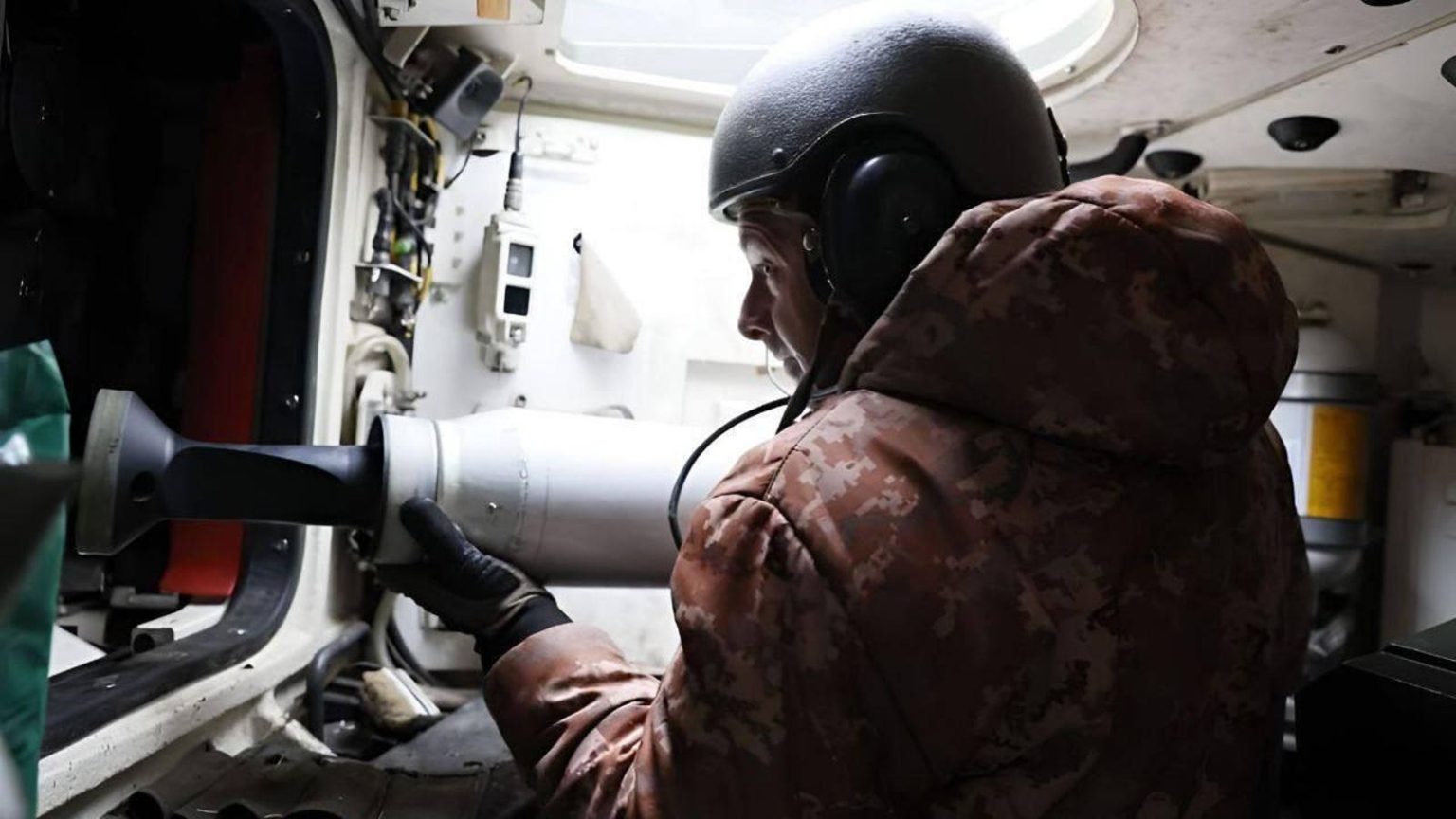It seems at least some of Ukraine’s 40 or so ex-European Leopard 2A4 tanks are firing obsolete DM33 sabot rounds from their 120-millimeter smoothbore cannons. But Ukrainian Strv 122 tanks—ex-Swedish versions of the newer Leopard 2A5—are firing more modern, and more dangerous, DM53 rounds.
That makes the 10 Strv 122s that Ukraine got from Sweden the superior tank-killers.
A photo that circulated online on Tuesday depicts a tanker with the Ukrainian army’s 21st Mechanized Brigade lugging a 40-pound DM53 inside a Strv 122’s turret. Both the gun and the ammunition are made by Rheinmetall in Germany.
The 2001-vintage DM53 is an armor-piercing fin-stabilized discarding-sabot round: basically, a 25-millimeter-diameter tungsten dart encased in a disposable shoe that pops off after the round leaves the barrel. Free from its shoe, the penetrator dart lances toward its target at 1,500 yards a second or faster.
A sabot round can poke through a tank’s armor like a needle through flesh. When a Ukrainian T-80 tank fired a Russian-made 3BM42 sabot round at a Russian T-72 in northeastern Ukraine late last year, photos of the aftermath underscored the devastating effect of even an inferior sabot round such as the short-rod 3BM42. The penetrator killed the gunner and commander and disabled the tank, forcing the driver to bail out.
Exactly how powerful a sabot round is depends on the length and hardness of the penetrator as well as other design factors. A 1987-vintage, German-made DM33 sabot round should penetrate 500 millimeters of steel from 2,000 yards away. A longer DM53 should penetrate 600 millimeters of steel from the same distance.
A newer Russian T-72 might survive a hit by a DM33; it might not survive a DM53 hit.
The 1990s Strv 122 has the same EMES-15 fire-controls as the 1980s Leopard 2A4, and the same 44-caliber 120-millimeter smoothbore gun. In theory, a Leopard 2A4 also can fire DM53 rounds. And indeed, there’s a good chance some of Ukraine’s 2A4s do fire the rounds.
That’s because the EMES-15 can hold ballistic data for up to a dozen different shell types: training, smoke, high-explosive, sabot, et cetera. As long as a round fits inside the gun and the gun can produce enough pressure for that shell type, any EMES-15-equipped tank can fire any 120-by-570-millimeter ammunition.
But a tank operator has to choose no more than a dozen ammo types for its Leopard 2s, and program them into the EMES-15. To change a tank’s ammo mix, the operator must reprogram the fire-controls.
That Rheinmetall has restarted, on Ukraine’s behalf, production of the old DM33 sabot round is a strong indicator that at least one of the NATO countries that has donated Leopard 2A4s to the Ukrainian war effort sent along tanks that were programmed for the DM33 but not for the newer DM53. And no one took the time to change the programming.
Perhaps there’s another explanation for the production of old DM33 rounds. In any event, it’s hard to imagine the Ukrainians prefer the inferior sabot ammo. It’s likely they have no choice but to arm some of their tanks with DM53s, and others with less powerful DM33s.
Read the full article here





